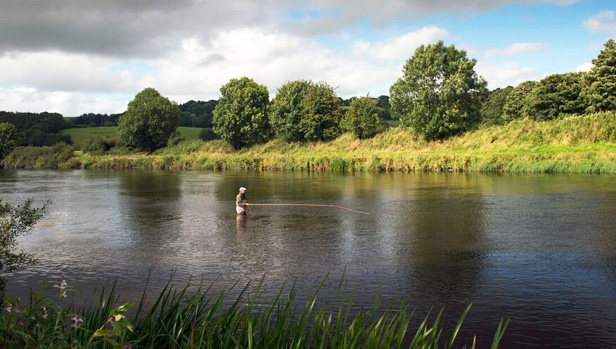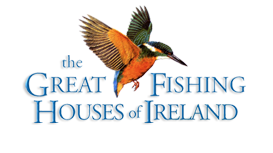

The Rivers
Caragh River
Season:
Salmon: 17 January to 30 September
Sea trout: 17 January to 12 October
Brown trout: 15 February to 12 October
The Caragh River drains the southern slopes of Macgillicuddy’s Reeks and half a dozen small loughs before it enters Lough Caragh. On leaving Caragh, it flows approximately 2 miles to the tide at Rossbehy Creek on Dingle Bay. The catchment is 66 square miles.
K R D Fisheries Ltd controls the river downstream of the lough and Glencar Hotel manages the Upper section.
The Caragh River is a classic spate system. It gets a very good run of spring salmon and grilse. The lower river is also a noted sea-trout fishery but, strangely, they don’t run the upper river in appreciable numbers.
The lower Caragh River has about twenty pools up to the lake. There is some nice fly fishing in the middle section. The belief that the spring fish tend to run through is not altogether true and fish are taken here from February. This section has produced over twenty fish in May in recent years. The grilse begin running at the end of May and it is during the summer months, when conditions are right, that the fishing is best.
The fishing is tidal at Caragh Bridge and this stretch usually fishes best for two hours before and two hours after the high tide.
The sea trout run late – from mid august – and the night fishing can be really excellent. The Jungle Cock and Black Pennell are two of the recommended patterns. The sea trout will also take a fly during the day in dull conditions.
The upper Caragh is primarily a salmon and grilse fishery. The spring fish run from February to April and the grilse begin running at the end of May and the run peaks in July, depending on water conditions.
From the lake up to Blackstones Bridge is known a ‘The Caol’. It is deep and sluggish, with the exception of the Lickeen Pool, which has a stream and can be fished with a fly. The rest is fished from a boat – either spinning or trolling.
The stretch from Blackstones Bridge to the joinings at Boheeshil – a distance of 4 miles approximately – is divided into seven beats and has fourteen pools. The beats are rotated daily at 1.30 pm and there is only one rod per beat, though a child under 16 years or a wife or husband can also share the beat.
All legitimate methods are allowed except natural shrimp or prawn.
An orange tube fly (orange hair and black body) is good in spring and on dropping water. The Lemon and Grey is considered the fly for the Caragh River and after it comes the Blue Charm and Silver Doctor in sizes 6 and 8 single and 10 double.
Excerpts taken from "Trout & Salmon Rivers of Ireland, an angler's guide" by Peter O'Reilly.

